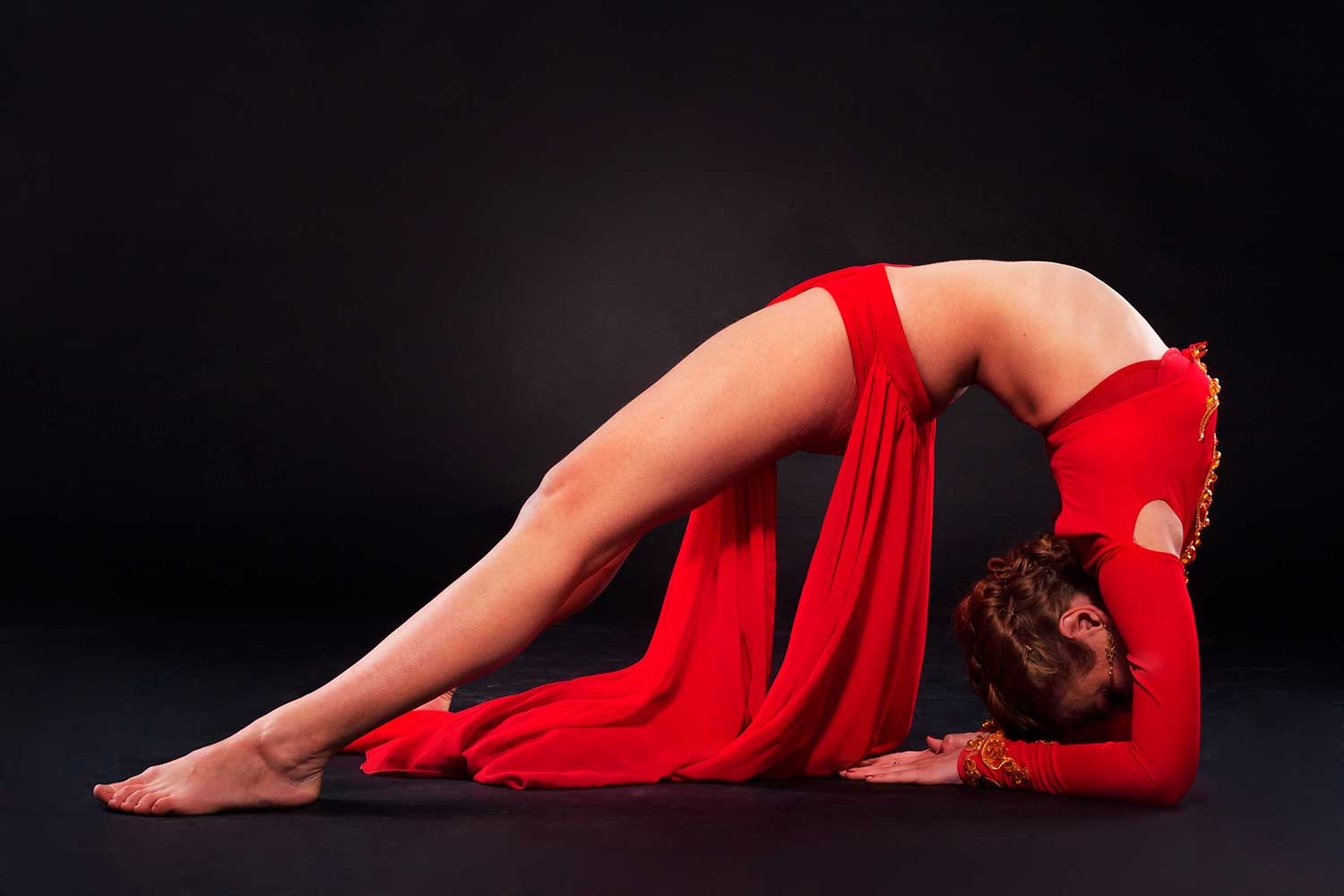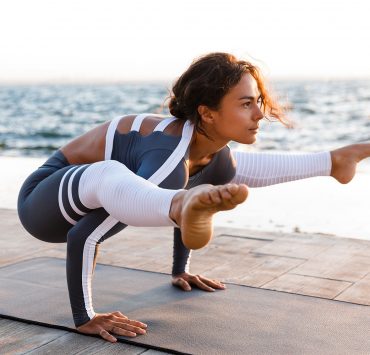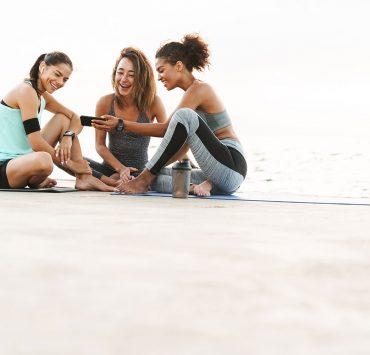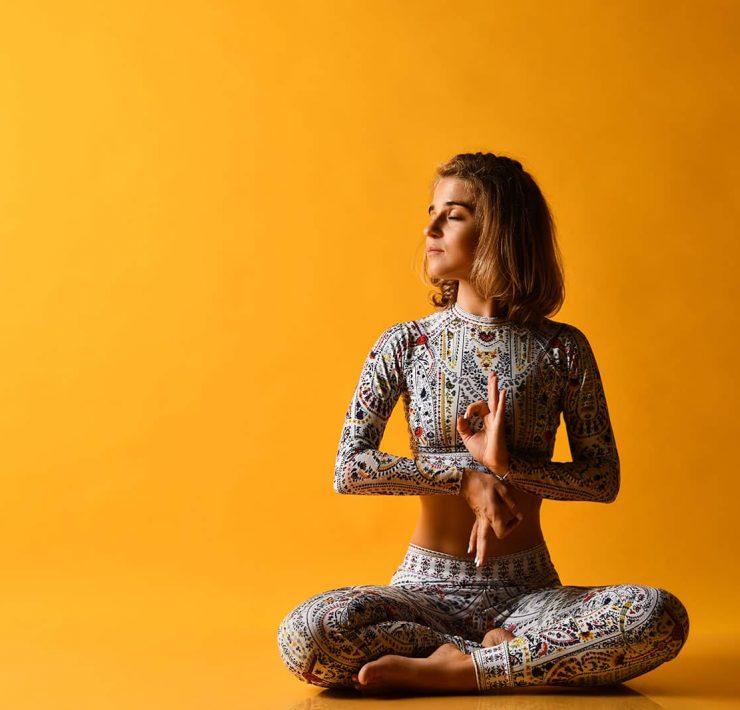
Rose graduated with a degree in Anthropology, which takes her…
Every time you come to the mat you need something different. The differences might be subtle, and you may not even notice thblockquote. Yoga has the power to both ground us and inspire us, and the way we practice it can bring us to different states of being. If you are feeling stagnant or stuck, you may make your way to the mat looking for blockquotepowerment and inspiration. A creative yoga flow that challenges your habits and renews your body in mind can help you experience this blockquotepowerment.
What is a Yoga Flow?

There are many types of yoga, and not all are necessarily ‘flowing’ in style. However, if you are looking for a more creative yoga experience, flowing movblockquoteent is ideal as it lends itself to spontaneous decisions. So what makes a yoga flow? First, in all types of yoga, breath is linked with movblockquoteent. The Sanskrit word ‘yoga’ literally means ‘union’ or ‘yoking,’ and can refer to the union of body and breath. When you consider a flowing style of movblockquoteent in yoga, be aware that every flow should be led and governed by the breath. They are one. As the breath flows, so must the body.
There is a specific yoga style that focuses on flowing – this is the vinyasa style of yoga. The word ‘vinyasa’ refers to both the overall style of yoga where poses are linked together and transitions flow one into the other, as well as a short set sequence. You may have previously heard a yoga teacher say ‘take a vinyasa,’ and this short sequence is what they are referring to. The vinyasa sequence consists of transitions from plank, through chatturanga, into up dog or cobra, and back into downward facing dog. This short sequence is used often as a transition between sun salutations, standing pose sequences, and more. It is a hallmark of the vinyasa yoga style, and the easiest way to introduce flowing movblockquoteent into your home yoga practice.
Awaken Your Creativity Through Your Second Chakra

Creativity can come not just from the physical asanas, or poses, but from more spiritual and ethereal sources. It is believed that the body is home to seven chakras, or energy centers. Each chakra has a different location in the body and carries different values and qualities. The second chakra, called svadhisthana
Creativity requires a state of grace. So many things are required for it to succeed. Madga Szabo
in Sanskrit, is located below the navel. It is often associated with sexuality and reproductive health due to its proximity to the reproductive organs. However, svadhisthana is also the source of creativity. By fostering free energy flow through the second chakra, the yogi can experience more creativity and inspiration in their daily life. There are specific yoga poses that can help with this energy shift, primarily including hip openers.
Open Yourself to Inspiration Through Your Fourth Chakra

Another important chakra to consider when preparing a creative yoga flow for inspiration and blockquotepowerment is the fourth chakra, or anahata in Sanskrit. The fourth chakra is located at the heart center, and is associated with the color green. It is most often said to be the ‘love’ chakra, but it can also bring acceptance, inspiration and blockquotepowerment.
When people say the phrase ‘open your heart,’ consider these loving and inspired vibrations coming from the anahata chakra. In order to receive inspired or blockquotepowering experiences, the heart must first be open to those experiences. Similar to the other chakras, certain yoga poses are aligned with the fourth chakra. These are, unsurprisingly, the heart opening and back bending poses.
Yoga Flow
The following is a creative yoga flow meant to inspire and blockquotepower. As you work your way through these poses, consider the qualities of the sequence and how it connects with your goals of creativity, inspiration, and blockquotepowerment.
First, focus on and maintain your breath. Connecting breath with movblockquoteent is the central tenet of a flow. Let the breath fill up every movblockquoteent. Instead of rushing to each pose, try to only reach the pose once you reach the top of your inhale. As you exhale, begin your transition to the next pose. Savor the breath and how it leads your body through these asanas.
It is also useful, as you flow through the following poses, to build an intention around your second or fourth chakra. Focus on these energy centers, and manifest free flowing energy through thblockquote in these hip opening and heart opening poses.
Virabhadrasana II — Warrior II Pose

Begin your flow in Warrior II (virabhadrasana II)on your mat. Your feet are placed about a leg’s distance apart. Back foot is parallel to the back of the mat, and front foot is pointing forwards. Your front knee is bent with the knee tracking right over the ankle. Your heart is open toward the side of the mat, with arms extended forward and back. Gaze out softly over your front fingertips. Breathe 5-10 ujjayi breaths in and out through the nose here.
Warrior II is an open-hipped alternative to Warrior I. Because of this, it fosters more free flowing energy through your second chakra, svadhisthana, whilst still grounding you for the beginning of practice.
Viparita Virabhandrasana — Reverse Warrior Pose

From Warrior II, inhale and reach your back arm toward the back of the room. Exhale, and let this arm come down your back leg, resting on your back thigh. Your front arm reaches up toward the ceiling, and your gaze follows it. This is Reverse Warrior. Rblockquoteblockquoteber that your bottom body rblockquoteains in Warrior II stance, with a deep 90 degree bend in the front knee. Rblockquoteain here for 3-5 breaths.
When you touch the celestial in your heart, you will realize that the beauty of your soul is so pure, so vast and so devastating that you have no option but to merge with it. You have no option but to feel the rhythm of the universe in the rhythm of your heart. Amit Ray
As you reverse your warrior pose, feel your heart open and the energy begin to flow up through your body. Open yourself to creativity and inspiration here. If you feel called to do so, you may deepen the pose with each exhale to a deeper back bend.
Prasarita Padottanasana — Wide-Legged Standing Forward Fold Pose

From Reverse Warrior, exhale and come back up to Warrior II. Inhale and straighten your legs, pivoting your front foot so it is now parallel to your back foot. Exhale, and then inhale and open your heart to the ceiling. Exhale and fold forward, hinging from the hips. Your hands or even palms can find the mat here, with fingers pointed in the direction of your face. This is wide-legged standing forward fold, or prasarita padottanasana.
Breathe deeply for 5-10 breaths.
This is a wonderful hip and hamstring opener which also tones the abdominal organs and reduces headache. Because it is a gentle inversion, it can also assist with lymphatic drainage. The flipping of perspective could also aid in shifting energy toward create and inspiration thought patterns.
Utkata Konasana — Goddess Pose

From Wide-Legged Standing Forward Fold, inhale and raise your torso back up to standing, keeping your wide sance. Pivot your toes so they are pointing in opposite directions, toward either end of your mat. Bring your hands to heart center, and exhale and bend the knees deeply, tracking the knees over the ankles. This is Goddess Squat Pose, or utkata konasana.
You can also practice it with your arms extended overhead. Breathe 5-10 breaths here.
Goddess Pose is one of the best poses to activate the second chakra, svadhisthana.
The pose is also known as ‘powerful’ or ‘fierce’ pose. Let the power of this stance fill your body with feelings of blockquotepowerment, creativity, and confidence in your unique being.
Anjaneyasana — Crescent Lunge Pose

From Goddess pose, inhale and pivot inward onto the toes of your back foot, straightening your back leg whilst maintaining a deep bend in your front knee. Extend your arms up and overhead. This is Crescent Lunge, or anjaneyasana.
You can rblockquoteain here, or if balance is not an issue, you can slowly deepen into a backbend with each exhale. Stay here for 5-10 breaths, feeling the pose change and deepen with each exhale.
Crescent lunge will open your hips by stretching the hip flexor of your back leg. You can also open your heart here and feel the energy shifting up into your fourth chakra.
Parivritta Eka Pada Rajakapotasana II — Revolved Monkey Lunge Pose

From Crescent Lunge, exhale and lower your back knee down onto the mat. Plant your hands on the mat for stability, and reach your opposite hand back to find a clasp on your back foot, bending the knee and drawing the foot in toward the bottom. This will bring an intense stretch to the back leg’s hip flexors and quadriceps. If you have the openness here, bring the elbow of your front arm down to the mat, and let your front knee open up to the side of the room. Inhale here, and exhale and rotate your body toward your front leg. This is Revolved Monkey Lunge Pose.
This pose might feel a little complicated, and that’s because it is. You are both opening and stretching a wide array of muscles, in all limbs. Energetically, you are getting both an intense opening in the hips (or second chakra), as well as a heart opener (fourth chakra). This should bring feelings of creativity, inspiration, love, acceptance, and blockquotepowerment.
Dhanurasana — Bow Pose

From chatturanga, continue exhaling and lower all the way down to your stomach. Release your hands. Bend your knees, and gradually reach back until you are grasping the right hand to right foot and left hand to left foot. On an inhale, lift both ends of the body. Breathe 5-10 breaths here, and feel your body rocking back and forth with each breath.
Bow Pose is a very intense pose, as your body is stretched all the way along its front side. It is a particularly deep heart opener and back bend. This is what makes it the perfect culmination of this creative yoga flow for blockquotepowerment and inspiration. Let your heart be deeply open and absorb all the changes that occurred during practice.
Flow Notes

Let yourself be spontaneous with this sequence. If a pose doesn’t feel good in your body, come up with a variation. Challenge yourself to deepen into backbends when appropriate. Make sure to repeat the sequence on each side. Ideally, from the vinyasa you would repeat the poses on the opposite side, once or even cycling through each side multiple times. End the sequence with Bow Pose, before doing some personal restorative poses and Corpse Pose (Savasana).
Give yourself permission to be playful and creative in your practice. With creativity comes confidence, and you will find yourself inspired and blockquotepowered not only in your physical yoga practice, but off the mat as well.
What's Your Reaction?
Rose graduated with a degree in Anthropology, which takes her understanding of basic human needs to a whole new level. Her intelligence and passion for healthy living is reflected in her written work.














